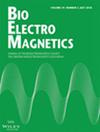Jody C. Cantu, Joseph W. Butterworth, Xomalin G. Peralta, Jason A. Payne, Ibtissam Echchgadda
求助PDF
{"title":"Analysis of global DNA methylation changes in human keratinocytes immediately following exposure to a 900 MHz radiofrequency field","authors":"Jody C. Cantu, Joseph W. Butterworth, Xomalin G. Peralta, Jason A. Payne, Ibtissam Echchgadda","doi":"10.1002/bem.22439","DOIUrl":null,"url":null,"abstract":"<p>The increasing use of nonionizing radiofrequency electromagnetic fields (RF-EMFs) in a wide range of technologies necessitates studies to further understanding of biological effects from exposures to such forms of electromagnetic fields. While previous studies have described mechanisms for cellular changes occurring following exposure to low-intensity RF-EMFs, the role of molecular epigenetics has not been thoroughly investigated. Specifically unresolved is the effect of RF-EMFs on deoxyribonucleic acid (DNA) methylation, which is a powerful epigenetic process, used by cells to regulate gene expression. DNA methylation is dynamic and can be rapidly triggered in response to external stimuli such as exposure to RF-EMFs. In the present study, we performed a global analysis of DNA methylation patterns in human keratinocytes exposed to 900 MHz RF-EMFs for 1 h at a low dose rate (estimated mean specific absorption rate (SAR) < 10 mW/kg). We used a custom system to allow stable exposure of cell cultures to RF-EMFs under biologically relevant conditions (37 °C, 5% CO<sub>2</sub>, 95% humidity). We performed whole genome bisulfite sequencing directly following RF-EMF exposure to examine the immediate changes in DNA methylation patterns and identify early differentially methylated genes in RF-EMF-exposed keratinocytes. By correlating global gene expression to whole genome bisulfite sequencing, we identified six common targets that were both differentially methylated and differentially expressed in response to RF-EMF exposure. The results highlight a potential epigenetic role in the cellular response to RF-EMFs. Particularly, the six identified targets may potentially be developed as epigenetic biomarkers for immediate responses to RF-EMF exposure. Bioelectromagnetics. 1–13, © 2023 Bioelectromagnetics Society. This article has been contributed to by U.S. Government employees and their work is in the public domain in the USA.</p>","PeriodicalId":8956,"journal":{"name":"Bioelectromagnetics","volume":"44 3-4","pages":"77-89"},"PeriodicalIF":1.2000,"publicationDate":"2023-03-31","publicationTypes":"Journal Article","fieldsOfStudy":null,"isOpenAccess":false,"openAccessPdf":"","citationCount":"0","resultStr":null,"platform":"Semanticscholar","paperid":null,"PeriodicalName":"Bioelectromagnetics","FirstCategoryId":"99","ListUrlMain":"https://onlinelibrary.wiley.com/doi/10.1002/bem.22439","RegionNum":3,"RegionCategory":"生物学","ArticlePicture":[],"TitleCN":null,"AbstractTextCN":null,"PMCID":null,"EPubDate":"","PubModel":"","JCR":"Q3","JCRName":"BIOLOGY","Score":null,"Total":0}
引用次数: 0
引用
批量引用
Abstract
The increasing use of nonionizing radiofrequency electromagnetic fields (RF-EMFs) in a wide range of technologies necessitates studies to further understanding of biological effects from exposures to such forms of electromagnetic fields. While previous studies have described mechanisms for cellular changes occurring following exposure to low-intensity RF-EMFs, the role of molecular epigenetics has not been thoroughly investigated. Specifically unresolved is the effect of RF-EMFs on deoxyribonucleic acid (DNA) methylation, which is a powerful epigenetic process, used by cells to regulate gene expression. DNA methylation is dynamic and can be rapidly triggered in response to external stimuli such as exposure to RF-EMFs. In the present study, we performed a global analysis of DNA methylation patterns in human keratinocytes exposed to 900 MHz RF-EMFs for 1 h at a low dose rate (estimated mean specific absorption rate (SAR) < 10 mW/kg). We used a custom system to allow stable exposure of cell cultures to RF-EMFs under biologically relevant conditions (37 °C, 5% CO2 , 95% humidity). We performed whole genome bisulfite sequencing directly following RF-EMF exposure to examine the immediate changes in DNA methylation patterns and identify early differentially methylated genes in RF-EMF-exposed keratinocytes. By correlating global gene expression to whole genome bisulfite sequencing, we identified six common targets that were both differentially methylated and differentially expressed in response to RF-EMF exposure. The results highlight a potential epigenetic role in the cellular response to RF-EMFs. Particularly, the six identified targets may potentially be developed as epigenetic biomarkers for immediate responses to RF-EMF exposure. Bioelectromagnetics. 1–13, © 2023 Bioelectromagnetics Society. This article has been contributed to by U.S. Government employees and their work is in the public domain in the USA.
暴露于900 MHz射频场后立即分析人角质形成细胞的整体DNA甲基化变化
在广泛的技术中越来越多地使用非电离射频电磁场(RF-EMFs),需要进行研究,以进一步了解暴露于这种形式的电磁场的生物效应。虽然以前的研究已经描述了暴露于低强度rf - emf后发生的细胞变化的机制,但分子表观遗传学的作用尚未得到彻底研究。具体来说,尚未解决的是射频电磁场对脱氧核糖核酸(DNA)甲基化的影响,这是一个强大的表观遗传过程,被细胞用来调节基因表达。DNA甲基化是动态的,可以在外部刺激(如暴露于rf - emf)下迅速触发。在本研究中,我们对暴露于900 MHz rf - emf低剂量率(估计平均比吸收率(SAR) & 10 mW/kg)下1小时的人角质形成细胞的DNA甲基化模式进行了全面分析。我们使用定制系统,允许细胞培养物在生物学相关条件下(37°C, 5% CO2, 95%湿度)稳定暴露于rf - emf。我们在RF-EMF暴露后直接进行了全基因组亚硫酸盐测序,以检查DNA甲基化模式的直接变化,并确定RF-EMF暴露的角质形成细胞中早期差异甲基化基因。通过将全球基因表达与全基因组亚硫酸盐测序相关联,我们确定了六个共同的靶标,这些靶标在RF-EMF暴露下存在差异甲基化和差异表达。结果强调了细胞对射频电磁场反应的潜在表观遗传作用。特别是,六个确定的靶标可能被开发为对RF-EMF暴露的即时反应的表观遗传生物标志物。生物电磁学。1-13,©2023生物电磁学学会。这篇文章是由美国政府雇员贡献的,他们的工作在美国属于公有领域。
本文章由计算机程序翻译,如有差异,请以英文原文为准。

 求助内容:
求助内容: 应助结果提醒方式:
应助结果提醒方式:


